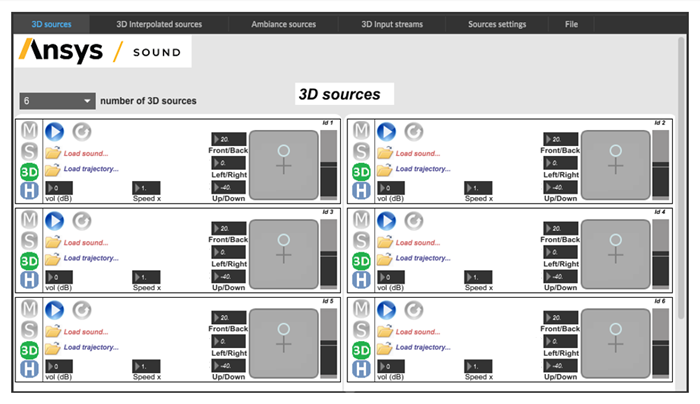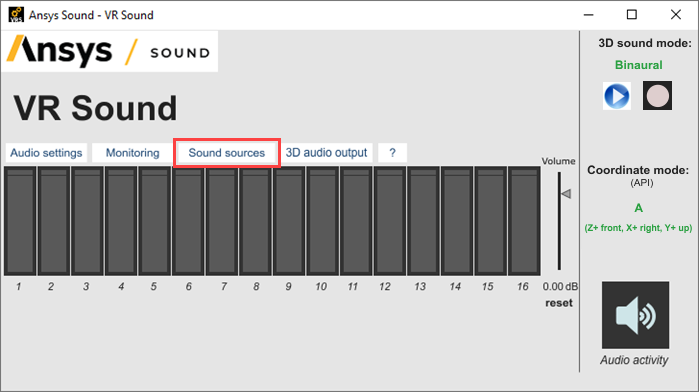Software Features
Ansys Sound: VR Sound is a software solution allowing the real-time creation and playback of spatialized audio scenes.
Ansys Sound: VR Sound provides output to four different types of 3D audio rendering systems: binaural rendering, simple and double transaural rendering, Vector Based Amplitude Panning rendering (VBAP), and ambisonics rendering.
An external simulation environment can send network messages to VR Sound in order to define parameters such as the sources, their position, volume, and diffuseness coefficient.

Defining and controlling the sound sources can also be achieved graphically using the VR Sound controller window (see below):

The controller window can be accessed by clicking the Sound sources menu of the main VR Sound window (see below):

The 3D audio engine collects messages and adapts in real-time to the modifications of the attributes of the sound sources.
The engine outputs the audio signals to be sent to the chosen rendering system.
The rendering can be achieved through headphones (binaural rendering), or loudspeakers using:
- Transaural or double transaural rendering (with 2 or 4 loudspeakers)
- VBAP rendering (multiple speakers)
- Ambisonics rendering (multiple speakers)
In the binaural mode, a head-tracking device may be used to compensate for the listener's movements, giving the virtual sources an absolute position in space.
The interface includes the following features:
- 20 3D sound sources can be spatialized simultaneously in real-time.
- 2 extra ambient sources can be added (non-spatialized like 3D sources, but rendered with a surround effect).
- 4 different models for 3D sound using binaural restitution are available, corresponding to different ratios of precision to computation cost.
- Equalization filters for specific headphone models can be included and selected.


